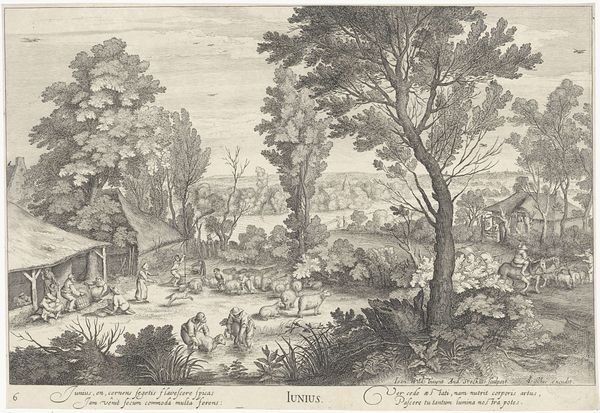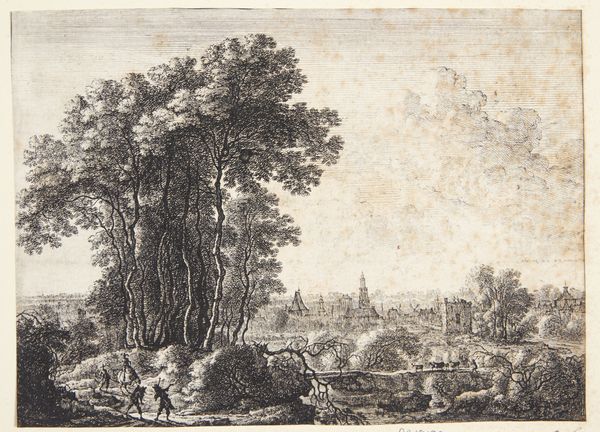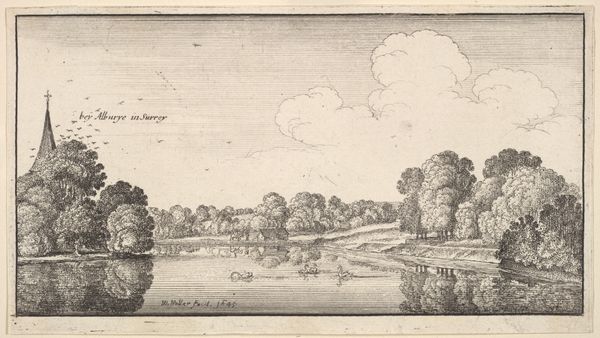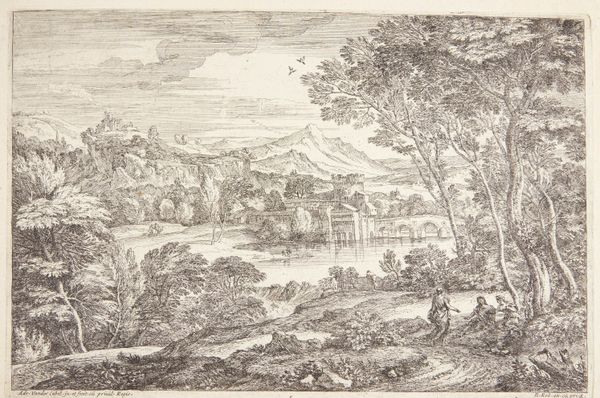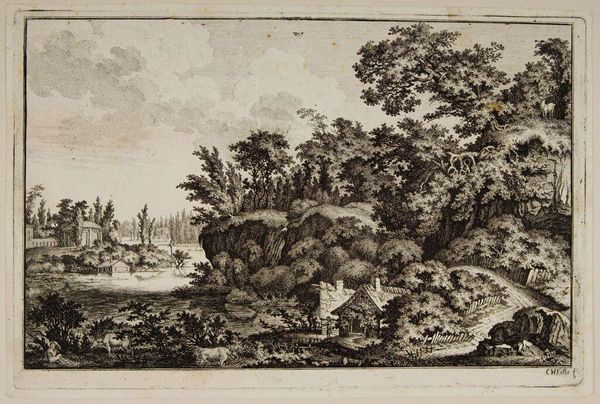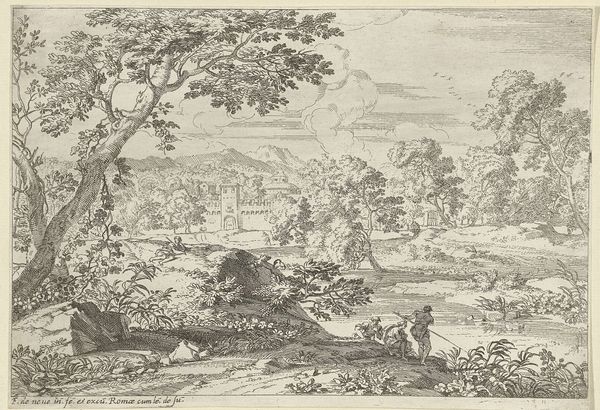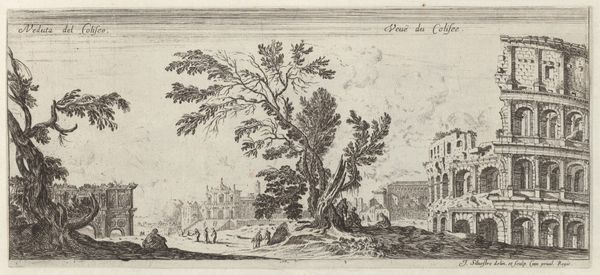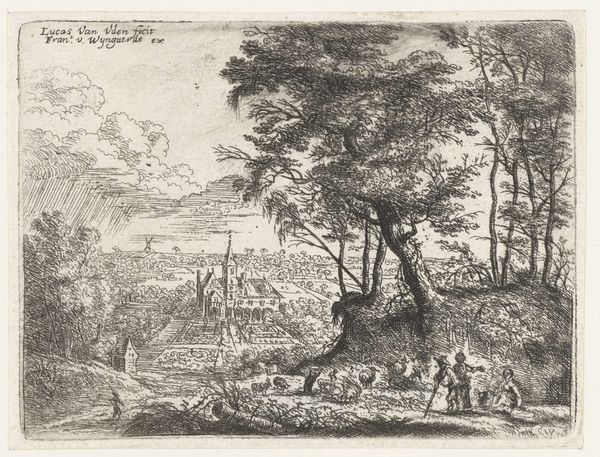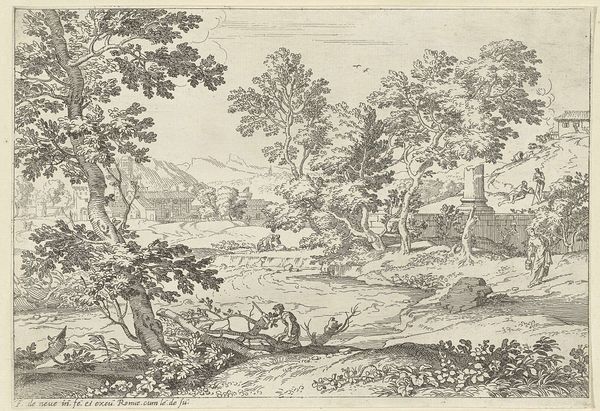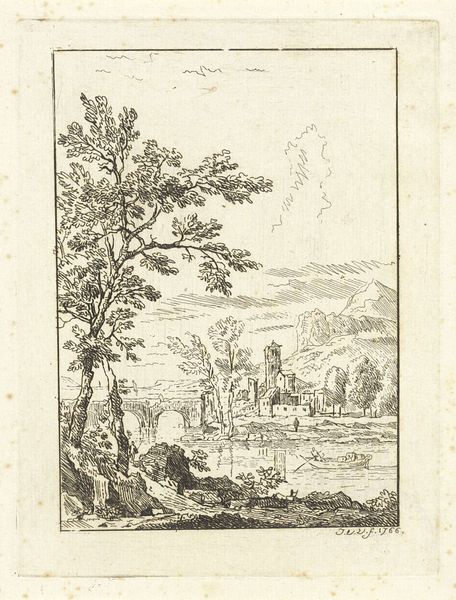
print, etching, engraving
#
baroque
# print
#
etching
#
landscape
#
line
#
engraving
Dimensions: 119 mm (height) x 216 mm (width) (plademaal)
Albert Flamen produced this etching, titled 'View Towards Anglois Harbour Near Charenton', sometime in the mid-17th century. It depicts a scene of leisure and labor along the banks of the Marne, just outside of Paris. It's important to recognize that landscapes like this weren't just innocent depictions of nature. France at this time was consolidating power under Louis XIV, expanding its bureaucracy, and standardizing its culture. Artists were increasingly drawn into this orbit, with institutions like the Royal Academy of Painting and Sculpture dictating aesthetic standards and career pathways. The image here reinforces the social order, contrasting the active labor of the working class with the relaxed poses of the upper class. The etching can be regarded as a social mirror, reflecting norms about class and gender. To truly understand this image, we need to dig into the social and institutional history of 17th-century France. Art historians consult period documents, like Royal Academy records and personal letters, to understand the economic and cultural conditions that shaped artistic production. Only then can we appreciate the complex social dynamics embedded within this seemingly simple landscape.
Comments
No comments
Be the first to comment and join the conversation on the ultimate creative platform.

